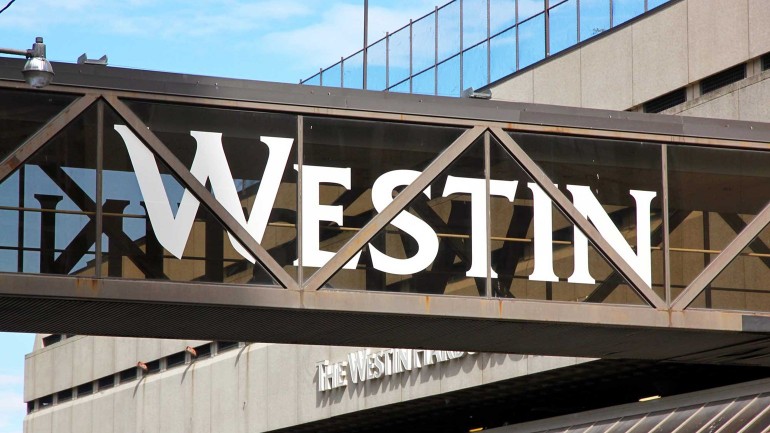Sponsored Listings:
Appealing to hotel loyalty members is all about strength in numbers, while catering to travel agents is all about one-on-one relationships.
So, while Marriott International spent the better part of 10 months courting, bidding for and ultimately buying Starwood Hotels & Resorts, the real work is just beginning.
With more than 5,700 hotels totaling about 1.1 million rooms in over 110 countries, Marriott last week began efforts to assure Starwood’s SPG loyalty members that the benefits of having an additional 18 brands to choose from will outweigh concerns over the service level offered by what is now by far the world’s largest hotel company.
Meanwhile, questions remain about how Marriott will court travel agents who have long maintained relationships with higher-end Starwood brands such as W, St. Regis and Westin.
Marriott, which announced the completion of the $13 billion acquisition on Sept. 23, appeared to get to work immediately to lay out how SPG would co-exist with Marriott Rewards.
On the day of the announcement, Marriott began allowing Marriott Rewards and SPG members to start transferring points between accounts, with three Marriott Rewards points equaling one SPG Starpoint. Marriott also matched member status levels between the two programs.
Still, Marriott might need until 2018 to merge the programs.
“We’ve got different rules in the two programs that need to be dealt with,” Marriott CEO Arne Sorenson said in an interview with Travel Weekly. “We’ve got different credit card companies, we’ve got different timeshare companies and we’ve got different technology platforms. All of that has got to get addressed in what’s likely to be a many-months-long process, maybe a few years.”
What could be even dicier is Marriott’s courting of travel agents who regularly book with Starwood. In addition to going up against Starwood’s agent-friendly reputation, Marriott’s marketing efforts during the past year, which have been geared to sway potential guests away from OTAs and toward direct-booking channels, has some agents believing that they’ve been overlooked.
“I’m very nervous that Marriott will promote booking direct,” said Susan Reder, manager-partner at Los Angeles-based Frosch, a member of the Signature Travel Network. “They have not been historically agent-friendly.”
Additionally, the sheer size of the combined company could dull relationships the hotel company’s salespeople have with agents, said Jack Ezon, president of New York-based Ovation Vacations, a member of Virtuoso.
“Something could fall through the cracks,” Ezon said. “If they do it wrong and they cluster hotels that serve completely different markets, they’re going to do themselves a big disservice.”
Working to Marriott’s advantage with SPG members is the sheer breadth of the expanded company. Starwood’s frequent guests more than doubled their brand access to 30 from 12 while gaining a flurry of select-service hotel brands such as Marriott’s Residence Inn and Courtyard where they can gain points during business travel.
In fact, Marriott Rewards in recent years has consistently outranked SPG in J.D. Power’s annual survey of North American hotel loyalty program satisfaction. Out of 14 programs, Marriott ranked second, behind Hilton Worldwide’s HHonors program, while SPG ranked 13th.
Rick Garlick, global travel and hospitality practice lead at J.D. Power, said, “The Starwood program really applies to frequent travelers who have elite status, which is a little more difficult to achieve, but once you do, it’s a great program. Marriott has done so well because of the wide distribution network. Guests say, ‘I can stay at a Fairfield Inn, save up points and eventually stay at a Ritz-Carlton.”
The influx of Starwood brands may be seen as redundant for some Marriott Rewards members because Starwood brands Sheraton, Westin and Le Meridien join Marriott and Renaissance in the upper-upscale category. Still, Starwood appears to have a larger luxury presence in China and the Middle East, further benefiting Marriott Rewards members.
Whatever investment Marriott makes to welcome SPG members and ultimately merge their program with Marriott Rewards will likely be worth it because it will likely complement Marriott’s effort to pull bookings away from OTAs, Garlick said.
“Keep in mind how important loyalty programs are in the fight for direct booking,” he said.
As for agent relationships, Marriott has implied that at least in the luxury sector, it remains business as usual.
“There is no change to our sales team, and we are still dedicated to our existing customers and hotel brands,” Ritz-Carlton wrote in a letter Sept. 26 to members of its Inner Circle group of travel agents. “The same is true from the Starwood side for the immediate future.”
And, Ezon said, it would be smart to keep it that way.
“Marriott has been successful at bifurcating Ritz-Carlton, which has a great relationship with agencies,” Ezon said. “If they’re able to do it with Ritz-Carlton, hopefully they can continue that with Starwood.”
That point is not lost on Sorenson, who acknowledged the concerns of agents who in the past have preferred dealing with Starwood rather than Marriott.
“We certainly intend to earn the loyalty of those who think Starwood has been better [at cultivating travel-agency relationships],” Sorenson said last week. “The last thing we want to do is cause our travel-agent partners to move someplace else.”
Sourse: travelweekly.com










